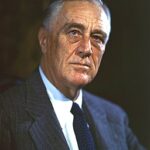The Historic Decision
When Franklin D. Roosevelt assumed the presidency in March 1933, America faced unprecedented economic collapse. Twenty-five percent of workers were unemployed. Banks had failed across the nation. Agricultural prices had plummeted by fifty percent. Roosevelt’s New Deal programs represented the most comprehensive government response to economic crisis in American history. 📊
Revolutionary New Deal Programs
The Civilian Conservation Corps launched in April 1933, employing 250,000 young men in conservation projects. The Works Progress Administration followed in 1935, creating jobs for millions of unemployed Americans. These programs built roads, bridges, and public buildings that still serve communities today. The Social Security Act of 1935 established retirement benefits for elderly Americans. 💰
Immediate Relief Measures
Roosevelt’s administration created the Federal Emergency Relief Administration to provide direct assistance to struggling families. The Public Works Administration invested billions in infrastructure projects. These New Deal programs provided immediate economic relief while building long-term national infrastructure. The programs restored public confidence in government’s ability to address economic hardship. ⚠️
Impact:
Economic Transformation
New Deal programs fundamentally transformed America’s economic landscape and social contract. Unemployment dropped from 25% in 1933 to 14% by 1937. The programs created over 8 million jobs during their peak years. Federal spending on relief and recovery reached $12 billion by 1939. These investments stimulated economic growth and restored consumer confidence. 📊
Social Safety Net Creation
Social Security became America’s most enduring New Deal legacy, protecting millions from poverty in old age. The program initially covered 26 million workers and has since expanded to serve virtually all Americans. Federal Deposit Insurance Corporation reforms restored trust in banking systems. Labor protections established collective bargaining rights for workers. These changes created lasting social stability. 💰
Long-term Historical Impact
The New Deal programs established the federal government’s role in economic regulation and social welfare. These policies influenced American governance for generations, creating expectations for government response to economic crises. The programs demonstrated democracy’s capacity to address systemic economic problems through peaceful reform rather than revolution. Roosevelt’s approach became a model for economic recovery worldwide during the 20th century. 🌍
